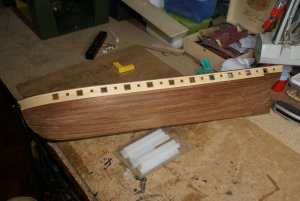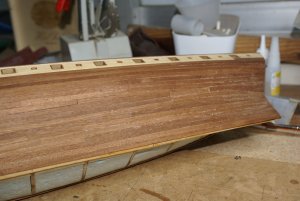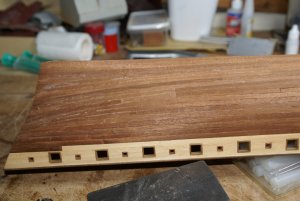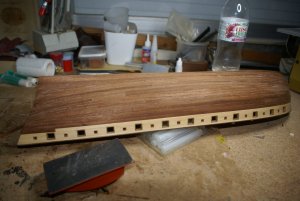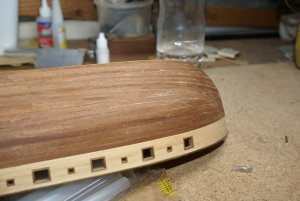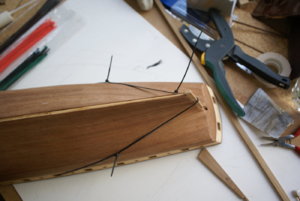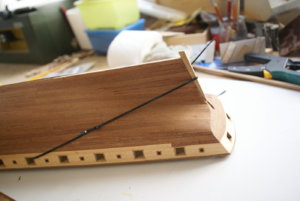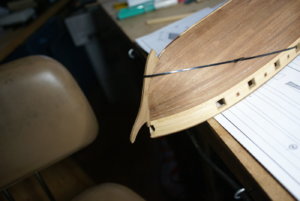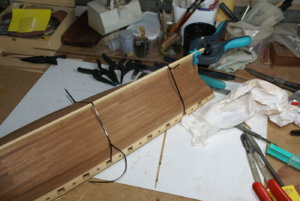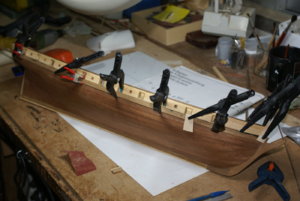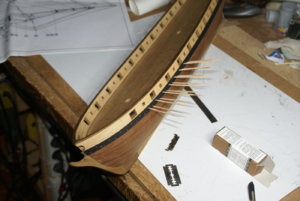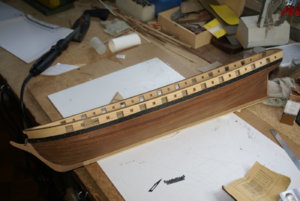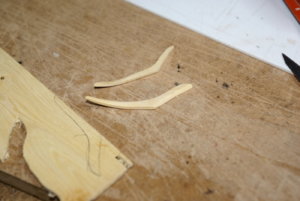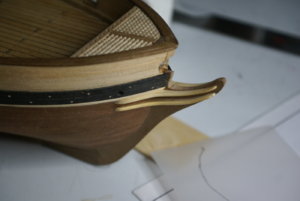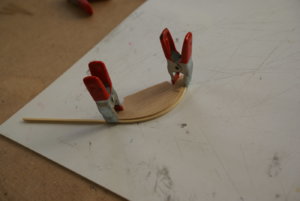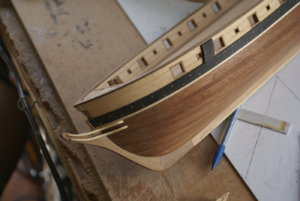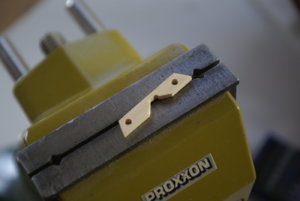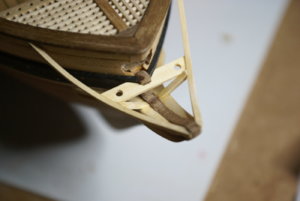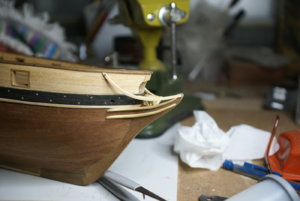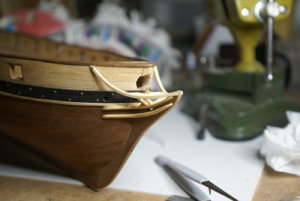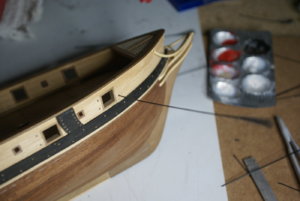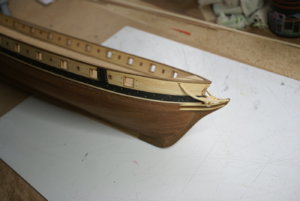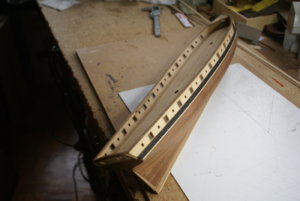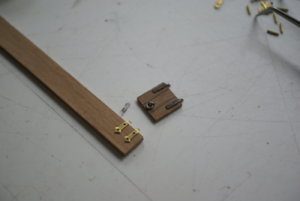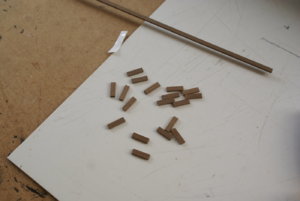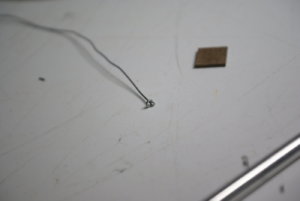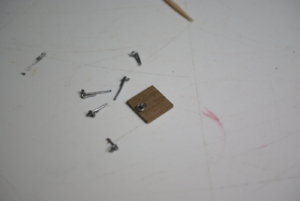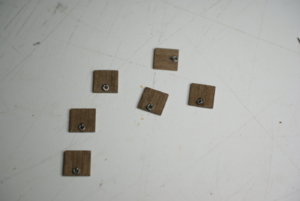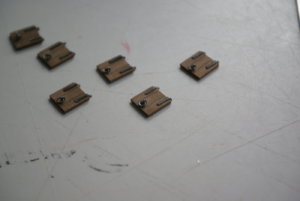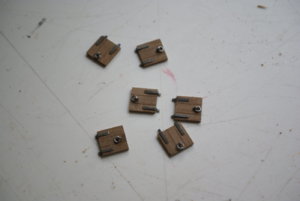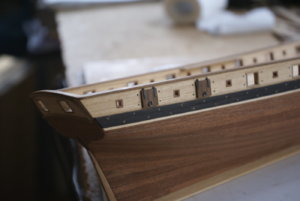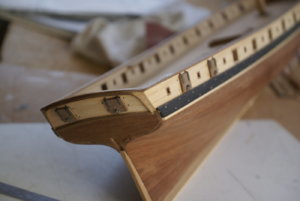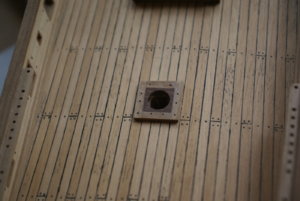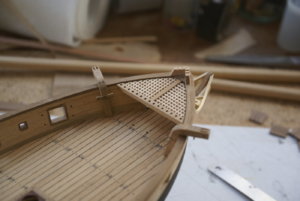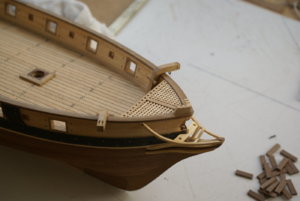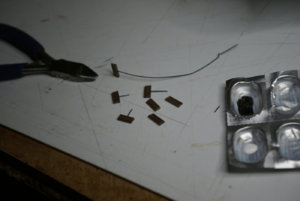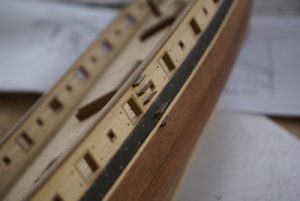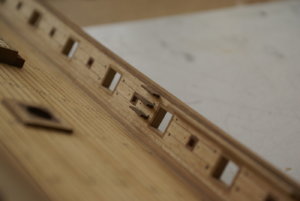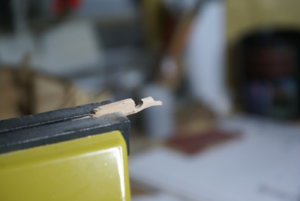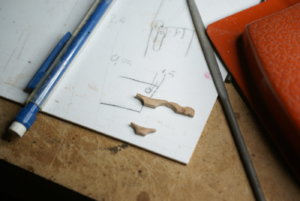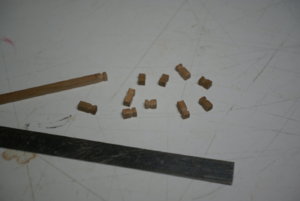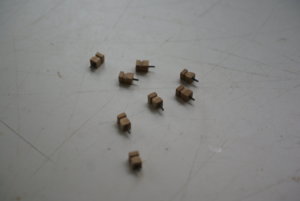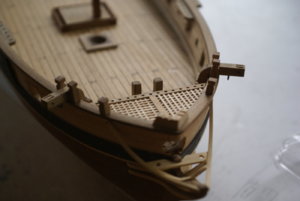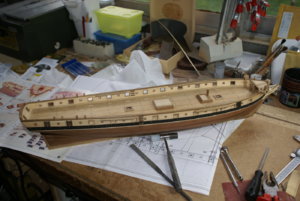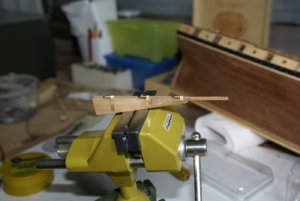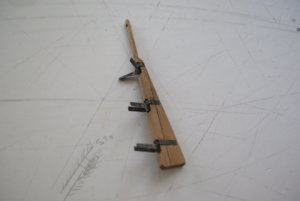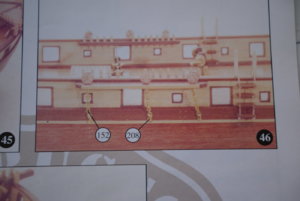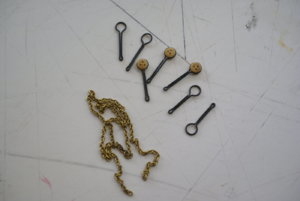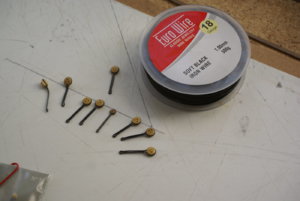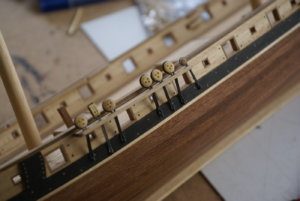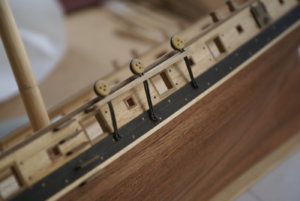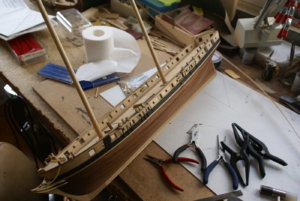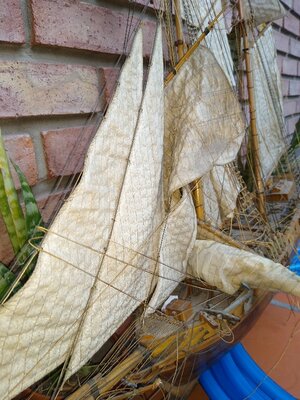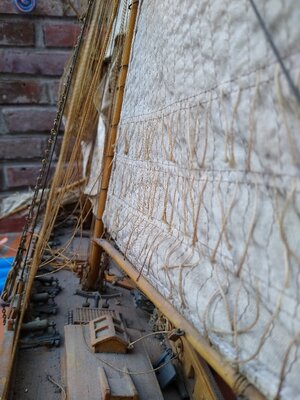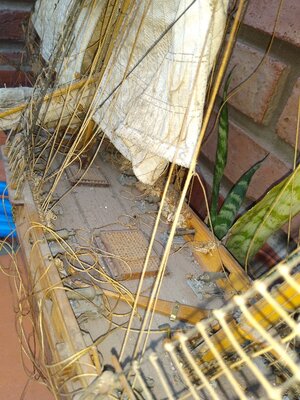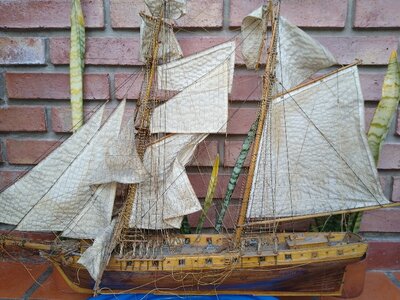Well, I kind of ressurrected this build, not only because the hull was in an advanced state of building but also because I needed some training planking because I have a much larger ship to plank and better train in a guinea pig. So I took this model again and decided to finish it.
I started planking the starboard side and I discovered that it had become much easier, in these 8 moths since the last post I gained some expertise, a lot of practise and as the principal factor, I lost the fear of working hard wood, I began to learn from my mistakes and discovered that errors are repairable and even disasters can be amended.
Some lessons I learned from this kit so far:
--- It was a very good idea to fill between the bulkheads with the blue foam. Not only it gives an immediate idea of the form of the hull, very helpful especially in those more critical areas, bow and stern, but also you have a much larger surface to glue the planks to, and prevents the concave aspect you sometimes get between the bulkheads especially near the more curved zones, bow and stern. I intend to do the same to my other buildings (well, Niña already has the hull filled and I am very happy with it too).
--- Not a good idea to apply glue to the top of the planks to glue each one to the immediatelly above. This is because for some uinknown reason, PVA (at least the rapid one that I used mostly) leaves a white line between the planks. I know it was supposed to dry colorless, but it doesn't. And even sanding the white line remains. I hope it disappears when I apply somme finish to the hull (oil?).
--- I had the idea of adding a plank to the botttom of the false keel and to the bow, the same width of the keel. I am happy with the result because after planking I could remove the plank with a chisel and a file and I was left with a groove on witch the real keel enters easily.
The boat is meant to be single planked. As I wrote before, Constructo supplies some 0,6mm sapelly but nowhere is mentioned that is is intended to be for a second plankig, neither does it make any sense to have the first and the second planking in the same wood. Knowing what I know now I'd rather have made it two planking and this is because I don't like sapelly. A first planking of a softer wood like lime or koto would have been much easier to apply and the second planking could have been of a better wood like pear, or even the 0.6 mm sapelly. It would have make the planking much easier, but I'd not have learned as much as I did


.
I don't like sapelly, not a bit. It has much too mach grain for a scale effect. For me it is a kind of a bad quality, cheaper mahogany. But it was what the kit supplied, so as I had no alternative at the time I started the kit, sapelly it is.
Now for some photos:
almost there:

the plank removed on the false keel, leaves the space for the keel, stem and forefoot.

Done
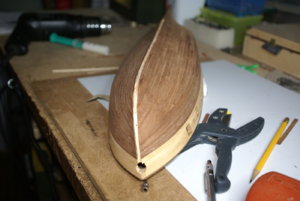
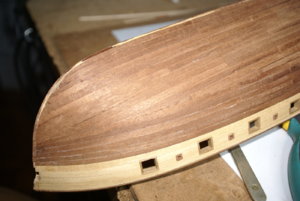
Now, sanding and more sanding to give a decent finish to the hull, and then go on with this building while the others are taking a rest
Best regards
JL



